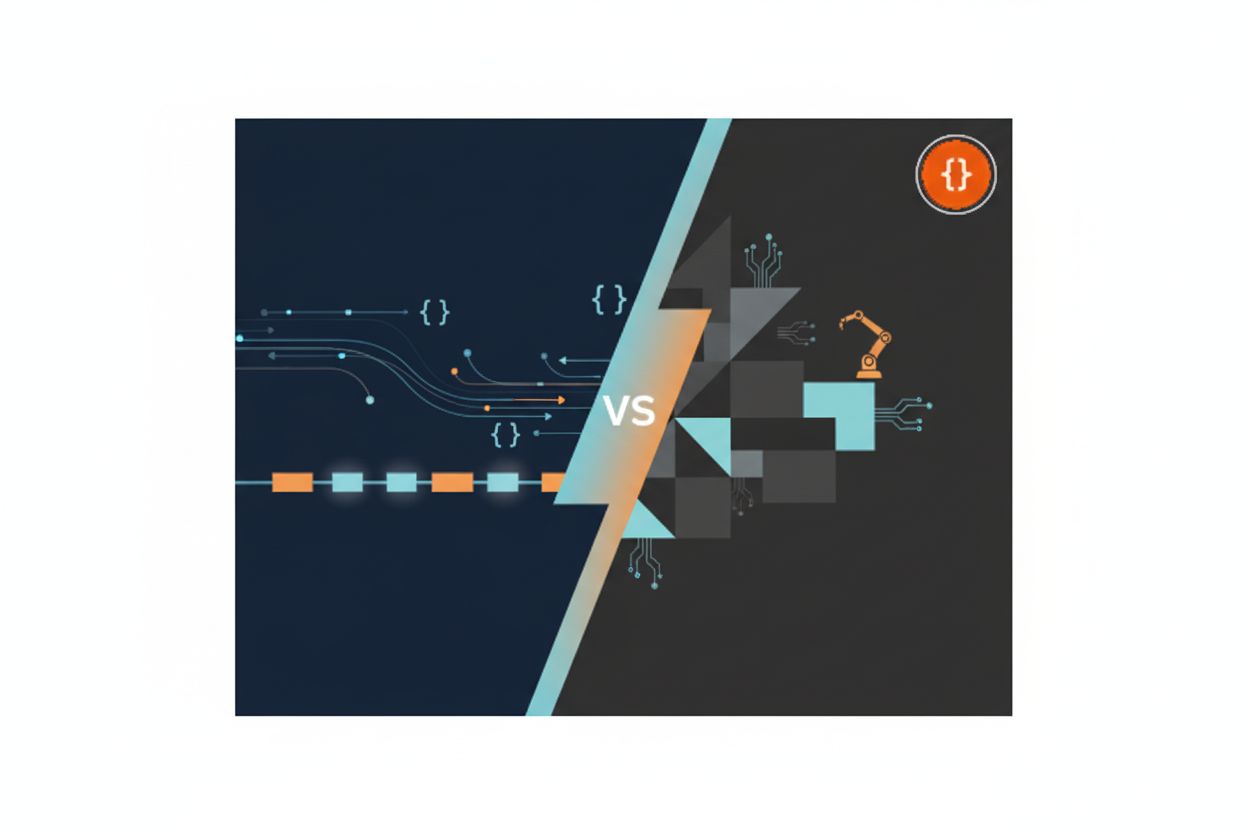Ensuring API Compatibility with Automated Testing
TL;DR
Why API Compatibility Matters
Alright, let's dive into why api compatibility is kinda a big deal. Ever been happily using an app when suddenly bam - it crashes or just starts acting janky? Yeah, API incompatibilities can be the culprit. It's like trying to plug a US appliance into a European outlet – not gonna work, and potentially gonna fry something.
APIs are the backbone (Understanding API: The Backbone of Modern Software Integration) – no joke. They let different systems chat with each other. Think of your banking app talking to your bank's servers, or an e-commerce site pulling product info from a supplier. If these APIs ain't compatible, things just break.
Incompatible APIs = Disaster. Imagine a healthcare app that can't correctly pull patient data because the api changed. Wrong meds, missed appointments – yikes! Or a retail app that glitches during checkout because of an api update, losing sales left and right.
Keep it running! Compatibility makes sure existing integrations still works when stuff changes. According to mabl, APIs are essential for building high-quality software, and maintaining compatibility is key to improving customer experiences. (The Role of APIs in Building a Delightful Customer ...)
Incompatibility = $$$. Fixing broken APIs after the fact is way more expensive than catching issues early on. It's like waiting for your car to break down completely instead of getting a cheap oil change.
Automation to the rescue! Automated testing spots compatibility issues super early, saving time and headaches. Treblle notes that api test automation can ensure api's function correctly under various conditions, maintain high performance, and meet security standards. (The Importance of Test Automation in API Testing - Scandium)
Docs and versions are vital. Good api documentation and versioning let everyone know what's changing, keeping things smooth.
Automated Testing: Your Compatibility Safety Net
Automated testing, huh? Think of it as your API's personal bodyguard, constantly checking for compatibility issues so you don't have to pull all-nighters fixing things later. It's like, way better than manual testing which, let's be honest, is prone to human error and takes forever.
- Faster feedback, fewer headaches. Automated testing just plain spits out results faster than any human ever could. (The Great Automation Paradox: Why AI in Testing Makes ...) This speed is crucial; it lets you catch those pesky compatibility issues early, like, way before they cause a full-blown crisis.
- Consistent testing, consistent quality. Unlike us humans who might forget a step or two, automated tests run the exact same way, every single time. This means no sneaky compatibility bugs slipping through the cracks.
- Continuous testing, continuous compatibility. With automation, you can test your API constantly, even as you're making changes.
Now, let's talk about the different types of automated api tests you should be using. It's kinda like having a whole team of specialists checking every nook and cranny.
- Functional testing: Makes sure your api does what it's supposed to do, based on its specs. For compatibility, this means ensuring that existing functionalities still work as expected after changes. For example, testing that a user can still log in with their existing credentials.
- Contract testing: Verifies that your api plays nice with other systems, as agreed upon. This is super important for compatibility because it ensures that both the API provider and consumer adhere to the agreed-upon interface, preventing unexpected breakages when one side updates. Think of it as a handshake agreement that's automatically checked.
- Integration testing: Validates how well your api works with other services. When your API interacts with other systems, integration tests ensure that these connections remain stable and compatible after updates. For instance, testing if your e-commerce API can still successfully communicate with the payment gateway API.
- Performance testing: Checks if your api can handle the load. While not directly about functional compatibility, ensuring your API can still perform under expected loads after changes is crucial for a good user experience and preventing compatibility-related performance degradation.
- Security testing: Finds and squashes potential vulnerabilities in your api code. Security vulnerabilities can sometimes be introduced or exacerbated by API changes, so ensuring security remains robust is a form of compatibility with security best practices.
Implementing Automated API Testing
Okay, so you've got some API tests running... now what? It's time to get 'em really working for you.
Choosing the Right Tools: First off, make sure your tool plays nice with your APIs. If you're using REST, something like Postman or REST-Assured is a solid bet. Got SOAP? SoapUI might be your jam. It's not just about compatibility, though. Think about how easy it is to use, how well it fits into your workflow, and if it gives you the reports you need.
- Ease of Use: Look for tools with intuitive interfaces and clear documentation. Can your whole team pick it up quickly, or does it require specialized training? A steep learning curve can slow down adoption and increase the risk of errors.
- Workflow Fit: Does the tool integrate with your existing development processes? Consider how it handles test creation, execution, and reporting. Does it fit into your CI/CD pipeline seamlessly?
- Reporting Capabilities: What kind of reports does it generate? Are they detailed enough to pinpoint issues? Can they be customized to highlight compatibility metrics? Good reports are essential for communicating test results to stakeholders.
Writing Killer Test Cases: Don't just slap some tests together. Plan it out! Cover the important stuff like user logins and product searches, but also think about weird edge cases. Give your tests clear names so you know what they're doing, and make sure they actually check the right things – status codes, headers, the whole shebang. Parameterize your tests, too – test with different inputs without rewriting the whole thing.
- Identifying Edge Cases for Compatibility: Think about scenarios that push the boundaries of your API's expected behavior. This includes:
- Boundary Values: Testing with the minimum and maximum allowed values for parameters.
- Invalid Inputs: Providing data that doesn't conform to the expected format or type.
- Empty or Null Values: Testing how the API handles missing or null data.
- Special Characters and Encoding: Ensuring the API correctly processes unusual characters or different encodings.
- Concurrency: Testing how the API handles multiple requests happening at the same time.
- Parameterization Examples for Compatibility: Instead of writing a separate test for each possible input, parameterize your tests. For example, if you have an API endpoint that accepts different user roles, you can parameterize the
roleinput to testadmin,user, andguestroles without duplicating test logic. Similarly, for testing different API versions, you can parameterize theversionheader or URL segment.
- Identifying Edge Cases for Compatibility: Think about scenarios that push the boundaries of your API's expected behavior. This includes:
ci/cd Integration is KEY. Automated tests are great, but they are even better when it runs automatically. Integrating your api tests into your continuous integration and continuous deployment (ci/cd) pipeline. Configure that ci/cd system to fail a build if any api tests doesn't pass.
Setting up robust ci/cd, like the one above, isn't just a nice-to-have–it's essential for catching those compatibility issues early and often.
Addressing Common Challenges
Okay, so you've automated your API tests, but now what? It's not always smooth sailing, is it?
- Dynamic APIs are a pain, right? Schemas change all the time. Contract testing can help, like, a lot. Think of it as a pre-nup for your apis – it makes sure everyone's on the same page, even when things get messy. Contract testing works by having both the API provider and consumer define and agree upon a "contract" that specifies the expected requests and responses. When changes are made, contract tests verify that the updated API still adheres to this contract, preventing unexpected incompatibilities from reaching production.
- Test data is another HUGE headache. Gotta have realistic data, but sensitive info needs protecting. test data management tools and data masking is your friend here.
- Why it's crucial for compatibility: Inconsistent or incomplete test data can lead to false positives (tests pass when they shouldn't) or false negatives (tests fail due to bad data, not actual compatibility issues). Realistic data ensures your API behaves as expected under real-world conditions. Masking sensitive data (like PII) is essential for compliance and security, preventing accidental exposure during testing. For example, if your payment API test relies on specific credit card numbers, using masked, synthetic data ensures you're testing the logic without risking real financial information.
- Environment configs can be a real nightmare; getting your test environment to mirror production? Use infrastructure-as-code tools, and maybe containerization with Docker.
- Why mirroring production matters: API compatibility issues often surface only when the API is deployed in an environment that closely resembles production. Differences in configurations, dependencies, or network settings between your test and production environments can mask or introduce compatibility problems. IaC tools (like Terraform or Ansible) and containerization with Docker allow you to define and spin up consistent, reproducible environments that accurately mimic production, thereby increasing the reliability of your compatibility tests.
Imagine a healthcare app; without proper test data management, your tests might expose patient data – yikes! Or, think about a finance api; schema changes without contract testing? Transaction errors galore. Not good.
So, what's the takeaway? API compatibility is a moving target, but with the right automated testing strategy, you're way ahead of the game.







